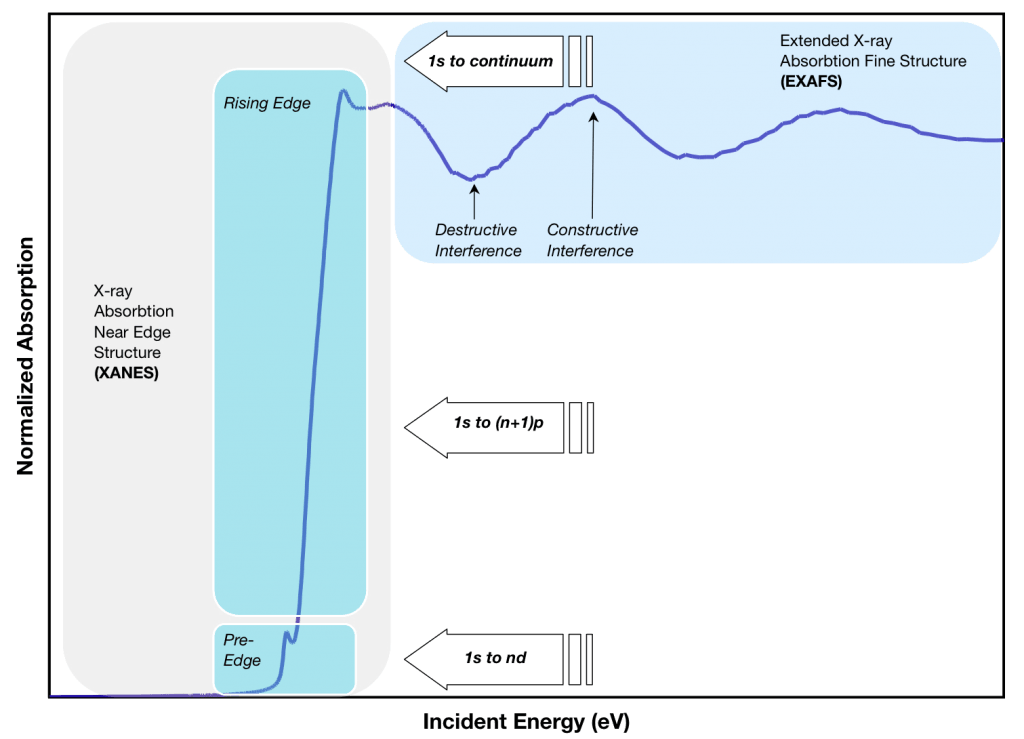X-ray absorption spectroscopy (XAS) is a widely used technique for determining the local geometric and/or electronic structure of matter. The experiment is usually performed at synchrotron radiation facilities, which provide intense and tunable X-ray beams. Samples can be in the gas-phase, solution, or as solids.
XAS data is obtained by tuning the photon energy, using a crystalline monochromator, to a range where core electrons can be excited (0.1–100 keV, 16–16,022 aJ). The edges are, in part, named by which core electron is excited: the principal quantum numbers n = 1, 2, and 3, correspond to the K-, L-, and M-edges, respectively. For instance, excitation of a 1s electron occurs at the K-edge, while excitation of a 2s or 2p electron occurs at an L-edge.

XAS is a type of absorption spectroscopy from a core initial state with a well defined symmetry therefore the quantum mechanical selection rules select the symmetry of the final states in the continuum which usually are mixture of multiple components. The most intense features are due to electric-dipole allowed transitions (i.e. Δℓ = ± 1) to unoccupied final states. For example, the most intense features of a K-edge are due to core transitions from 1s → p-like final states, while the most intense features of the L3-edge are due to 2p → d-like final states.
XAS methodology can be broadly divided into four experimental categories that can give complementary results to each other: metal K-edge, metal L-edge, ligand K-edge, and EXAFS.

